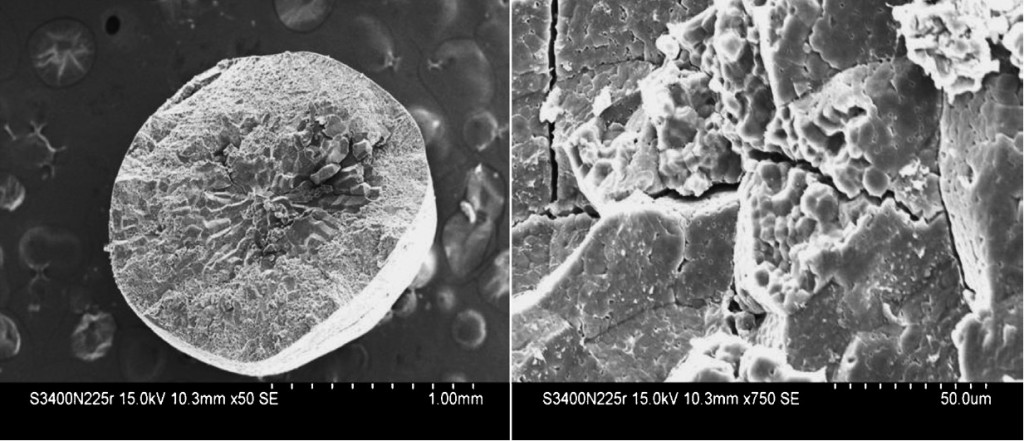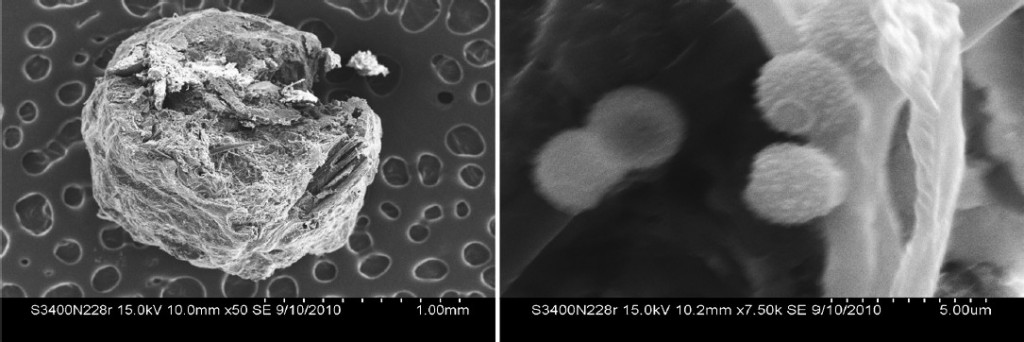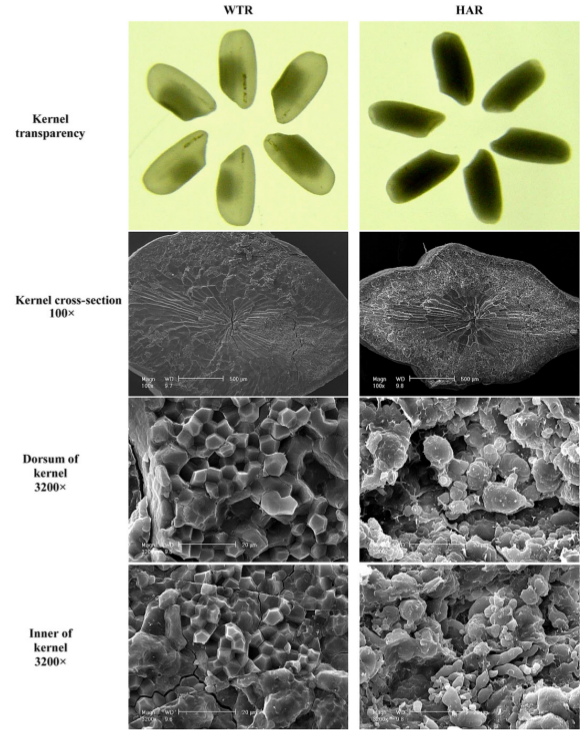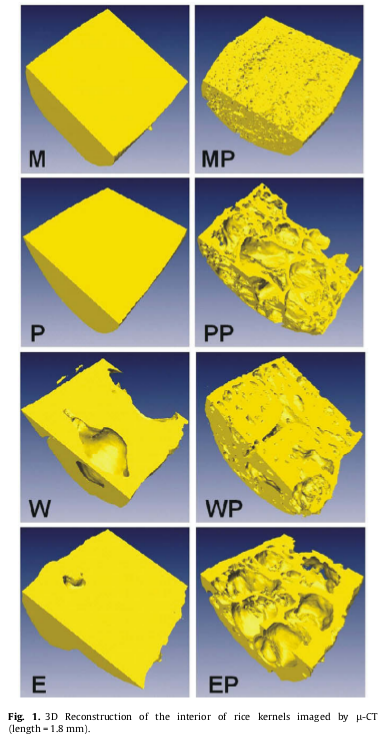Imaging of Rice – A review
Yesterday I went with some friends and looked at a SEM we’re thinking of buying. We’d likely keep it in a hackerspace located in a local rice farming community.
This naturally got me thinking about imaging rice, and I thought I’d take a quick look at what’s already been done.
This first article is concerned with Alfatoxin contamination in rice. Alfatoxins, produced by a fungus is a carcinogen, and can also produce liver failure. This first study was looking at normal and damaged rice grains, to identify the presence of the Alfatoxin producing fungi A. flavus. In conclusion, they have some cool images of normal and damaged rice, and fungal spores:
A second study looked at wild-type and genetically modified high-amylose rice. High-amylose rice is potentially better for diabetics. The study seems to have no specific goal, but just characterizes the two rice types. The methods section was interesting, and mentions their experimental rice field (never before have I wanted an experimental rice field, now I do). The prep process is basically as follows:
- Air-dry, and dehusked in an electrical dehusker (model SDL-A)
- Polish using a grain polisher (Model Kett, Tokyo, Japan)
- Dry samples in an oven a 40°C for 12 hours.
- Cool samples in a dessicator.
- Sputter coat with gold palladium.
The resulting images clearly show the large scale differences between the two rice types:
The final study isn’t using SEM imaging. Rather they use MRI and micro-CT imaging to look at the internal structure of the rice as it cook. The abstract of this paper is awesome:
In order to establish the underlying structure-dependent principles of instant cooking rice, a detailed investigation was carried out on rice kernels that were processed in eight different manners. Milling, parboiling, wet-processing and extrusion were applied, with and without a subsequent puffing treatment. The mesostructure of the rice kernels was examined by DSC and XRD, and the microstructure by micro-CT. Hydration behaviour during cooking was studied by MRI in a real-time manner. Based on simple descriptive models, three different classes of cooking behaviour can be discerned. The water ingress profiles during cooking of these three classes matched well with simulations from a model that was based on water demand of the starch mass and the porous microstructure of the kernels. Thus a clear correlation between meso/microstructure of a rice kernel and the cooking behaviour has been established.
- M: Milled
- P: Parboiled
- W: Wet-processed
- E: Extruded
- MP: milled and puffed
- PP: parboiled and puffed
- WP: wet-processed and puffed
- EP: extruded and puffed
Hmmmm I’d rather have a boil of extruded and puffed coated rice.
[1] Study of kernel structure of high-amylose and wild-type rice by X-ray microtomography and SEM>
[2] The effect of rice kernel microstructure on cooking behaviour: A combined
l -CT and MRI study
[3] Aflatoxin contamination in stored rice variety PAU 201 collected from Punjab, India



